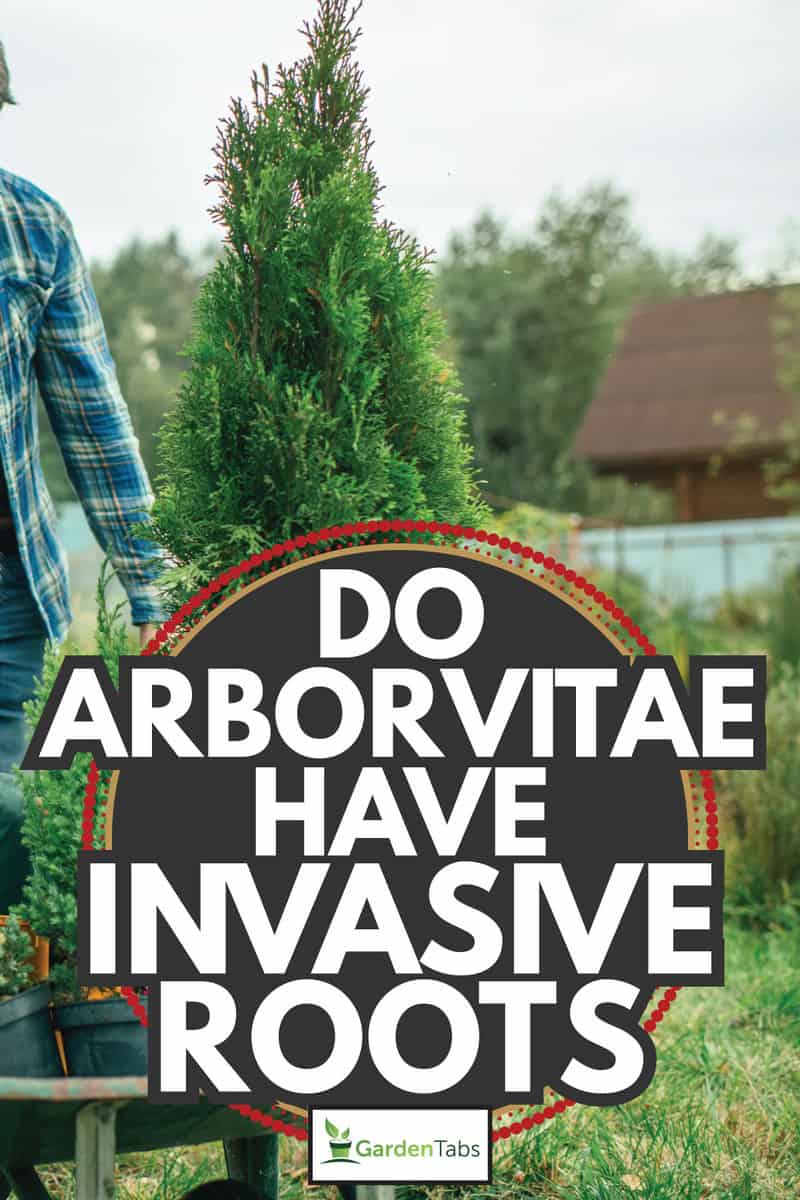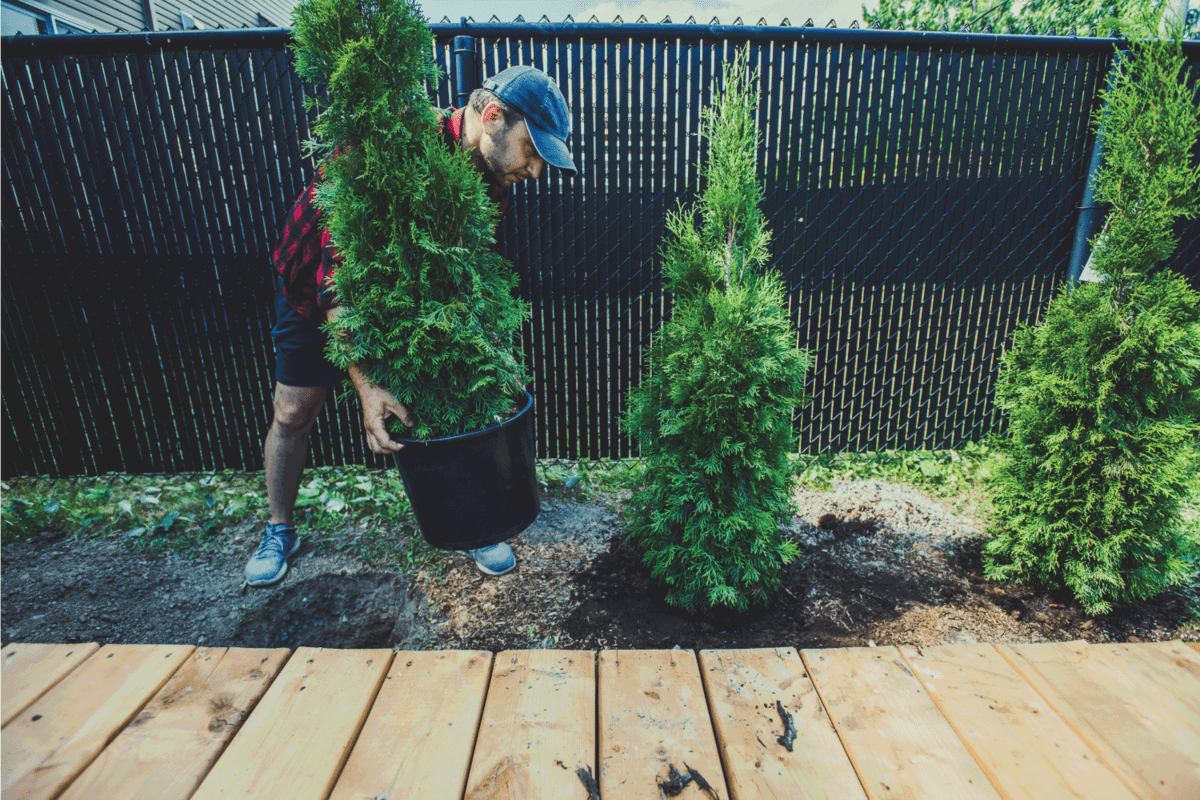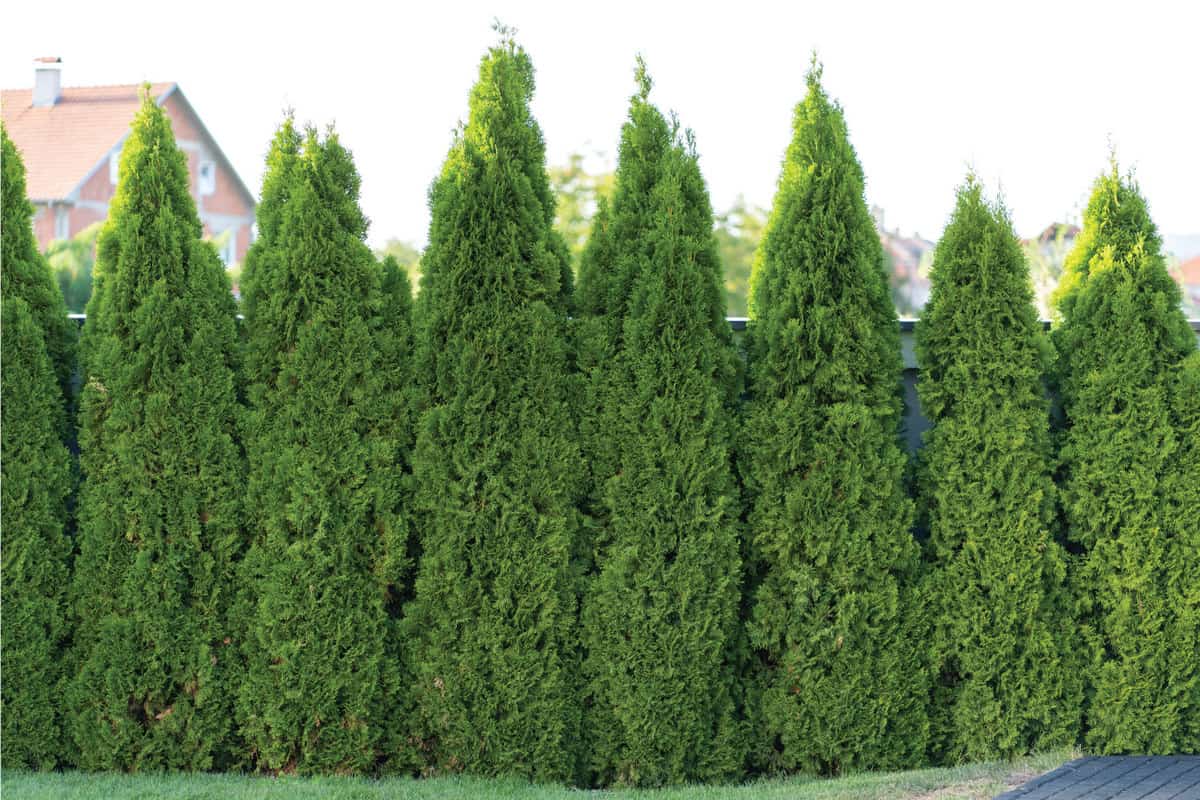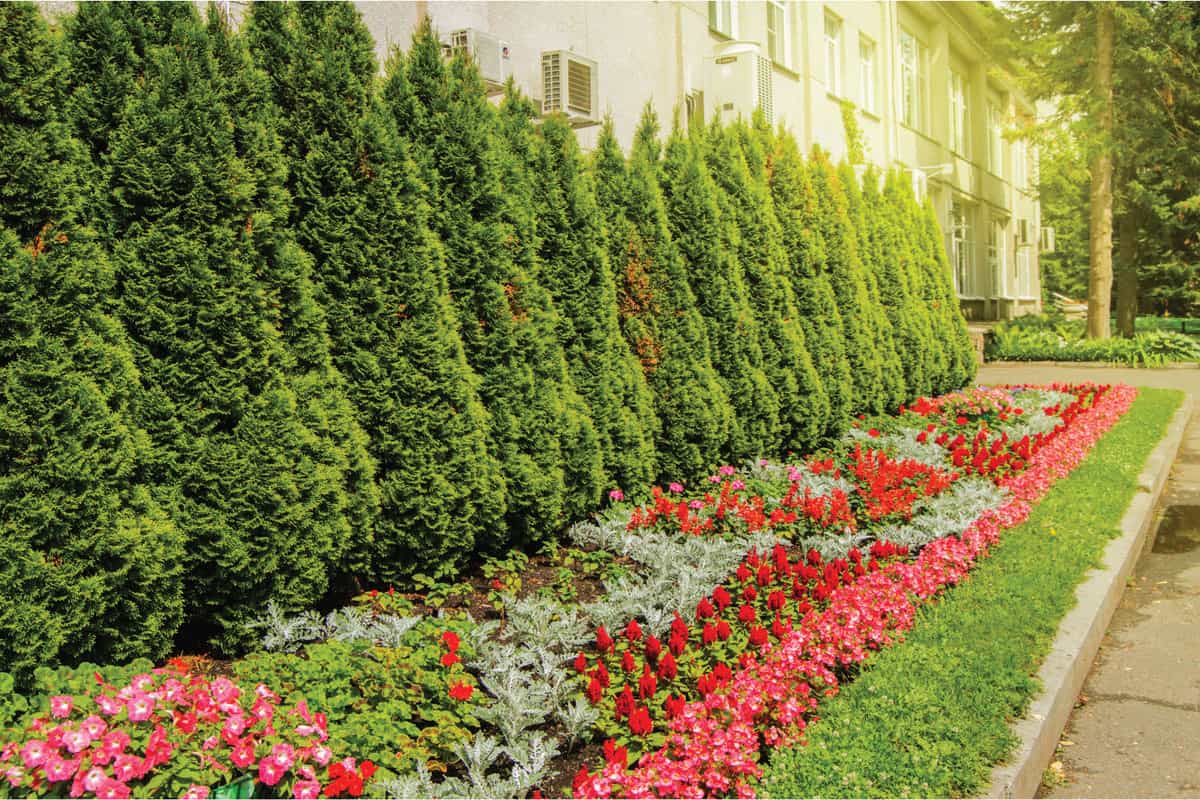Arborvitae is an evergreen tree in the cypress family that is a popular landscaping plant. Their dense foliage makes them a popular choice for privacy hedges or natural fencing. But, people wonder whether or not they have invasive roots which could cause damage to their foundation, driveway, and other aspects of their home. Luckily, we've researched this and have come up with the answer for you.
Arborvitae trees have a very shallow and fibrous root system that tends to spread out instead of down. The roots typically only spread as wide as the tree's canopy is, so they aren't considered invasive.
As is the case with any tree, if you're considering planting arborvitae in your yard, it is essential to know the root system to prevent damage. In this article, we'll explore the root system of arborvitae in more depth so that you can have all of the facts before deciding whether or not these trees are right for your lawn. Continue reading to learn more.

Do Arborvitae Have Deep Roots?
Arborvitae trees are not known for having deep roots. Instead, the roots are pretty shallow. There are five species of arborvitae, and the depth of their roots depends on the size of the tree. Most of the species of arborvitae can grow well over 50 feet tall, with the Northern White Cedar and Western Red Cedar being two examples.
Besides the five arborvitae tree species, there are other varieties that are cultivars of the larger trees. These cultivars tend to be smaller and are used more as hedges and commonly used for ornamental landscaping. They can be anywhere from 3 feet to 50 feet tall upon maturity.
So now, let's get back to the roots. We mentioned that the depth of the roots relates to the height of the specific arborvitae. For smaller arborvitae varieties, the roots only extend to a depth of about 8 inches below ground. For larger trees, the root depth can reach 18 to 24 inches.
Do Arborvitae Roots Grow Down Or Out?
Since the root system of arborvitae is very shallow and the roots only reach a maximum depth of about 2 feet under the ground, the roots tend to grow out instead of down. Although the roots don't grow very deep, they can grow out as wide as the largest part of the canopy.
Growing horizontally this way is one of the key features of fibrous root systems. Fibrous roots also tend to be very thin. So although they can grow relatively wide, it would be hard for them to do significant damage to the foundation or other aspects of your home.
Do Arborvitae Roots Spread?
One of the great things about arborvitae is that the roots don't spread farther than the circumference of the canopy of the tree. They may spread a little beyond the canopy, but they won't spread several feet beyond the canopy to a point where they would interfere and cause damage to other structures.
Of course, when planting several arborvitae trees together, it is important to space them apart adequately. This is needed to give them a chance to form a healthy root system and reach their full mature size. Roots are one of the keys to having a healthy tree, so you can't expect growth if the roots don't have enough room to spread.
How Far Should You Space Arborvitae?

The distance that you should space arborvitae depends on how large the species gets at its mature width. So basically, if a certain species of arborvitae can grow to 10 feet wide, you should space the trees 10 feet apart. This will allow plenty of room to establish a good root system and reach its mature width.
Here are some of the most common varieties of arborvitae and how wide they can get so that you know how far apart to space them:
- American arborvitae- 10 to 15 feet
- Green giant arborvitae- 12 to 20 feet
- Emerald green arborvitae- 3 to 4 feet
- Golden globe arborvitae- 2 to 3 feet
Keep in mind that these are just some of the many different cultivars of arborvitae. It would be impossible to list every variety, but the tag that comes on the type you purchase should tell you how wide it can get. Just remember to space the plants the same distance apart as they are wide at their mature size.
Depending on your space, it may be better to plant more trees that aren't as wide rather than trees that can get as wide as 15 or so feet. The wider a tree is, the longer it will take to reach that mature size. Planting trees that only get 3 or 4 wide (such as Emerald Green arborvitae) may give you the desired privacy faster because you can plant them closer together and still give them the space needed to establish healthy roots.
See more: 17 Best Privacy Bushes And Shrubs
What Happens If You Plant Arborvitae Too Close?
Making sure that you don't plant your arborvitae too close to each other is essential for good root and tree growth. This is especially important if you plan to use them as a privacy hedge or fence. Planting any type of tree too close together can cause them to compete for nutrients because their roots can't spread as far as they need to.
Competing for nutrients can cause problems with the growth of trees and shrubs and prevent them from thriving and maturing. Arborvitae trees and shrubs that didn't get as big as they were supposed to are not ideal if you're using them for privacy. It could cause gaps in their growth.
How Close To A Fence Can You Plant Arborvitae?

Just as arborvitae should be planted the same distance apart as they are wide, you should plant them that same distance away from a fence. In the case of the Emerald Green variety that can grow 3 to 4 feet wide, you should plant them that same distance away from the fence.
You can get away with planting them 3 feet away from the fence, but 4 feet may best. That way, it may give you extra room between the tree and the fence when the trees reach maturity. You will still have room to get behind the trees if you need to repair or maintain the fence over time.
How Close To A House Can You Plant Arborvitae?

As is with planting arborvitae near a fence, it's a good idea to plant the trees as far away from the house as they'll get at mature width. That means that a tree that gets 3 to 4 feet wide should be planted 3 to 4 feet away from the house to give the tree and roots plenty of room to spread and thrive.
However, when planting any tree or plant near your house, it is a good idea to add another 12 inches of space between the maximum width of the tree and the house. In the case of a 3 to 4 foot wide mature arborvitae, you may wish to plant it 4 to 5 feet away from the house.
You may be wondering why you would add that extra foot of space. Well, something that a lot of homeowners don't think about is that you may not want a tree brushing up against your house. This could cause bugs to get into your home by way of the tree.
It could even cause mold and mildew growth due to water on the branches when it rains and inadequate airflow between the tree and the house. And although the roots aren't invasive, it ensures that they have plenty of room to spread out so that the tree receives plenty of nutrients.
See more: 7 Best Arborvitae Fertilizers
How Hard Is It To Dig Up Arborvitae?
Whether transplanting or removing it completely, the difficulty of digging up arborvitae just depends on how big it is. If the trees have reached their full height, it's likely that you won't be able to move them without difficulty because they will be heavy. You may have just to cut it down.
But if they've been recently planted or are still relatively small, it's not too difficult. You'll just need to dig all the way around the tree while keeping the roots fairly intact and move it. That's another why it's a good idea to leave a little extra space between the tree and whatever you plant it near.
In Closing
We hope you found this guide about the roots system of arborvitae to be informative. The shallow root systems aren't invasive but can spread as far as the width of the tree. Since there are several varieties of arborvitae, that distance will vary. Remember to leave the same amount of space between trees and other structures to accommodate the root and tree growth. Thanks for reading!
